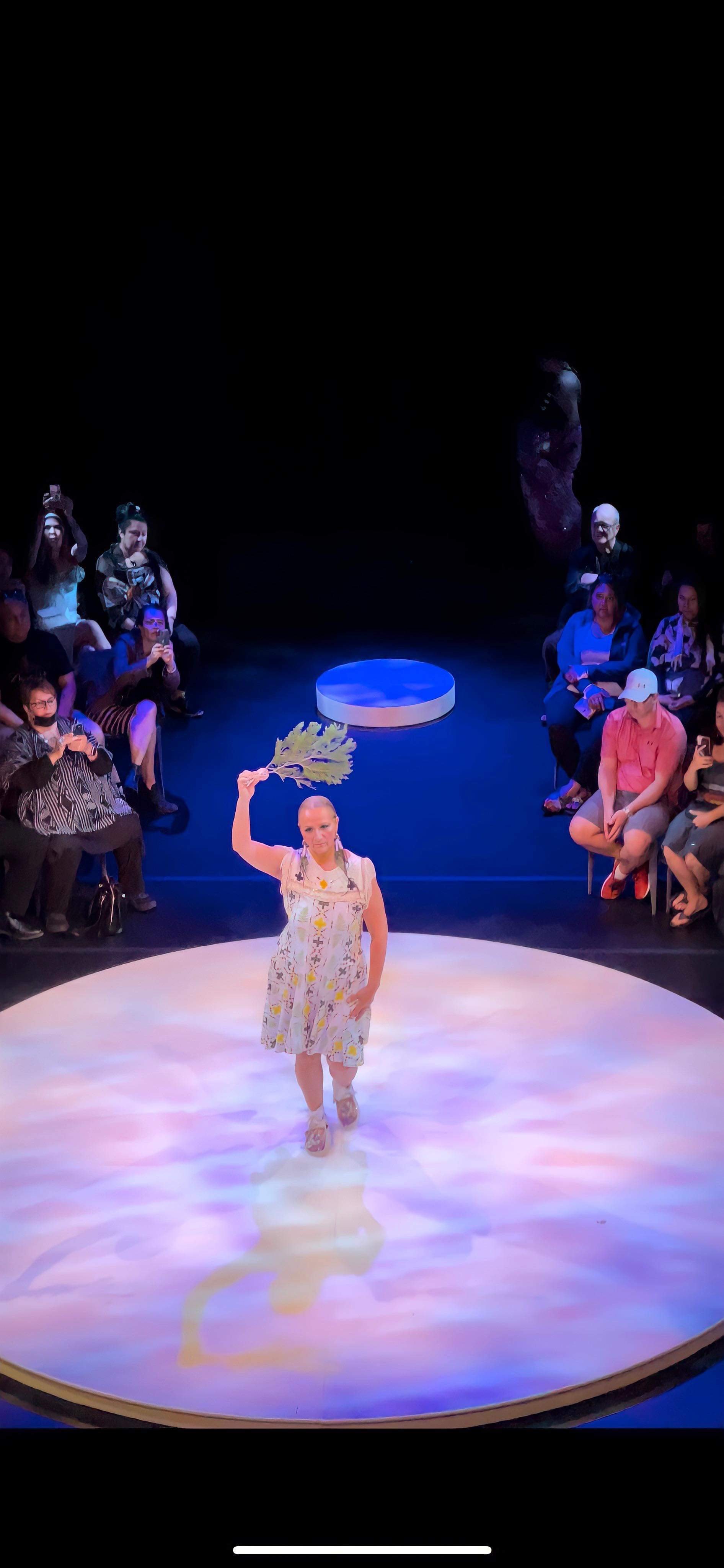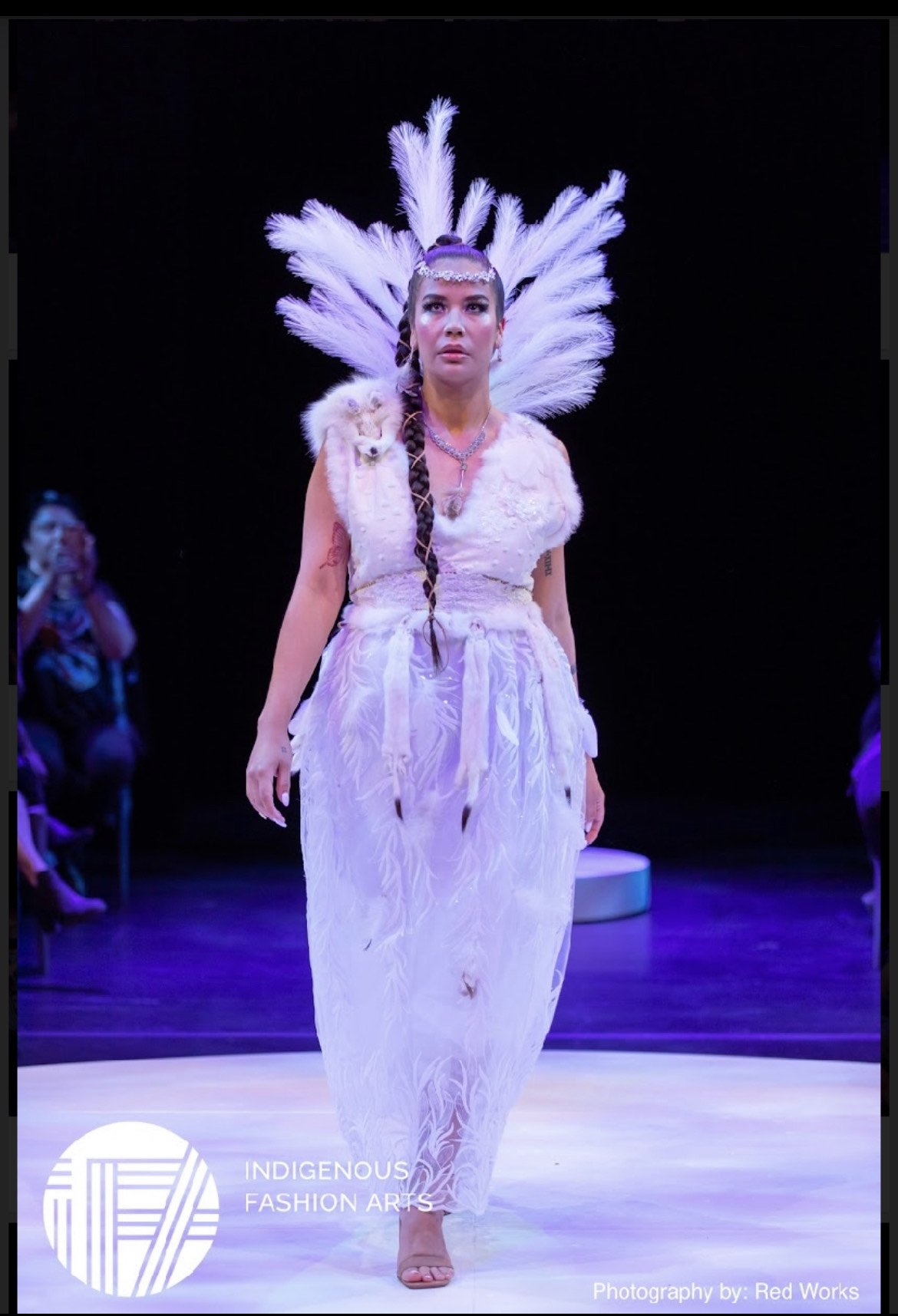From broadcasting to publishing books and creating a successful fashion brand—Manywounds has done it all
By: Bashair Ali
The Toronto Star named Manywounds as one of Canada's many Indigenous fashion designers responsible for changing the game (Photographs in the piece courtesy of Red Works).
What was once a dream has now become a full-fledged custom clothing business for Livia Manywounds, the creator of Dancing Storm Designs—an Indigenous haute couture fashion brand. The brand officially launched in 2021 and specializes in creating one-of-a-kind pieces that combine traditional Indigenous artwork with contemporary styles.
Manywounds is a member of the Tsuut'ina (Dene) and Siksika (Blackfoot) Nations — located in what is colonially known as Southern Alberta. Her traditional teachings and practices allowed the display of her culture and heritage through her wearable Indigenous art.
It took Manywounds some time before she invested in becoming a full-time independent fashion designer. As a person who has always been interested in telling stories, she chose the path of journalism as previous obstacles prevented her from pursuing an academic career in the industry.
“[Fashion] wasn’t looked at as a stable serious career because there weren't resources or opportunities available as there are now,” said Manywounds.
After completing post-secondary education at Mount Royal University for broadcasting in 2008, she started a job years later as a mobile reporter and associate producer at at CBC Radio-Canada. She operated a first-of-its-kind pop-up bureau chronicling stories within Southern Alberta First Nations.
As a reporter covering a 2018 Indigenous fashion event in Calgary, she was given the space to rekindle with her passion for fashion design. She re-realized just how much she enjoyed it. “I thought to myself that this is what I love to do and what I wanted to do,” she said.
However, due to Manywounds' father's sudden passing and her mother's cancer diagnosis, she took a year off from her job in Victim Services in southern Alberta. But despite this, she decided to engage in a creatively-driven healing process, materializing compelling and meaningful pieces and sharing it widely through social media.
“I never thought something would come out of posting, but more people started recognizing my work,” said Manywounds.
After gaining more recognition, she was encouraged to debut her creations at a community fashion show which was initially nerve-racking for her. “I thought people would judge me, but it turned out great,” she said.
But the labour load isn’t easy. “It’s a lot of work on one person - designing garments, working on the marketing aspect, keeping up with orders, running a business,” she said.
With her collection “Winter Count,” Manywounds then opened a Calgary show called Otahpiaaki–a term in the Blackfoot language that denotes to “the moment when the sole and the vamp of a moccasin are sewn together.”
“We used to tell stories about our achievements, milestones, many stories through pictures, drawings and symbols on a Buffalo Robe,” she said. Manywounds took that concept and made it her own by doing appliqué designs on garments and gowns with a hint of modernization and a vibrant colour palette.
Since then, she has created her own website, published three books and worked for several fashion shows, including the 2022 Indigenous Fashion Week Toronto and Rendezvous Fashion Show.
According to Manywounds, Indigenous fashion designers’ worldview differs from non-Indigenous folks bringing history to the garments. “We bring culture and heritage to the forefront by using symbols and designs,” she said.
The designs can have different interpretations depending on the artist's background, social issues and history.
“It’s not just about creating a garment but about bringing our stories to life.”





